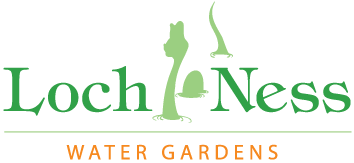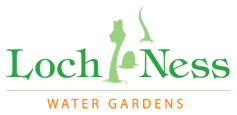 Aquaculture is a sustainable food production method that has become widespread, even in the USA. It has been relied upon in more densely populated countries for ages. With declining wild aquatic food to harvest, permaculture is the name of the game.
Aquaculture is a sustainable food production method that has become widespread, even in the USA. It has been relied upon in more densely populated countries for ages. With declining wild aquatic food to harvest, permaculture is the name of the game.
To put it in Daffy Duck lingo, “ ith a thuthainable thuthenance”
There is a new trend toward farm pond fisheries, but there is nothing new about aquafarming, aquaculture, or aquaponics. We may have come up with new terms and technology, but the ideas and basic methods pre-date recorded history. *"fish farm on the floating island by aka_lusi, on Flickr"
*"fish farm on the floating island by aka_lusi, on Flickr"
After all, “the way to a man’s heart is through his stomach”, they say. It must be our primal instinct to create efficient food supplies. The exhausting and dangerous chore of hunting wild animals must have sparked creative alternatives in the early days.
The challenge of feeding the inhabitants of ancient cities was probably not so different from those of our modern day cities. There are, simply, more cities, now.
Excavations that began in 1968, at the Roman city of Cosa, Italy, revealed an ancient fishery, estimated to have been from 273 BC.(1)
Those Romans knew how to put water to work for them, with the fish tanks, baths, and fountains of their famous aqueduct systems.
The Nile tilapia (O. niloticus) was one of the first fish species cultured. Illustrations from Egyptian tombs suggest that Nile tilapia were cultured more than 3,000 years ago. Tilapia has been called Saint Peter’s fish in reference to biblical passages about the fish fed to the multitudes. The Nile tilapia is still the most widely cultured species of tilapia in Africa. (2)
The movement toward more sustainable living has ramped up tremendously, with aquaculture playing a huge role. There is a long list of species that are successfully pond raised. Here are a couple of examples for an idea of recent methods and productivity:
- Consumers no longer have to try their luck at fishing in order to enjoy rainbow trout. Because of new research, scientists have developed environmental raceways and improved feeding conditions to encourage the production of fast growing, healthy trout. Improved production practices, selective breeding and nutritionally complete feeds now make it possible to produce market size (10- to 14-ounce) trout in as little as 10 months. Today, with modern rearing and shipping techniques about 95 percent of rainbow trout consumed in the United States is farm raised and available nationwide any time of the year at very reasonable price.(3)
- The channel catfish (Ictalurus punctatus) industry in the United States has gone through tremendous growth during its 35-year history. Total water surface acreage for catfish production has increased from about 56,000 acres in 1980 to more than 198,000 acres in 2000.(4)
 Aquaponics is sort of like aquaculture, with a side salad. It is a wonderfully cyclical, efficient system, with plants growing from the animal waste and vice versa. It’s a symbiotic relationship everyone should envy.
Aquaponics is sort of like aquaculture, with a side salad. It is a wonderfully cyclical, efficient system, with plants growing from the animal waste and vice versa. It’s a symbiotic relationship everyone should envy.
No farming method can recreate “free range” environments for fish, but maybe aquaponics it is a little better; like an apartment with potted plants.

*http://www.flickr.com/photos/73069365@N00/
“fish farm on the floating island by aka_lusi, on Flickr”
(1)McCann, Anna Marguerite (1979). “The Harbor and Fishery Remains at Cosa, Italy, by Anna Marguerite McCann”. Journal of Field Archaeology 6 (4): 291–311
(2)Thomas Popma, Auburn University and Michael Masser, Texas A&M Universityand published by the Southern Regional Agricultural Center and the Texas Aquaculture Extension Service
(3)Katheleen F. Ladewig and Michelle Morat. Professor and Extension Foods and Nutrition Specialist and graduate student in Nutrition, The Texas A&M University System
(4)Juan L. Silvaand Stuart Dean. Department of Food Science and Technology, Mississippi State University Food and Fiber Center, Mississippi State University

